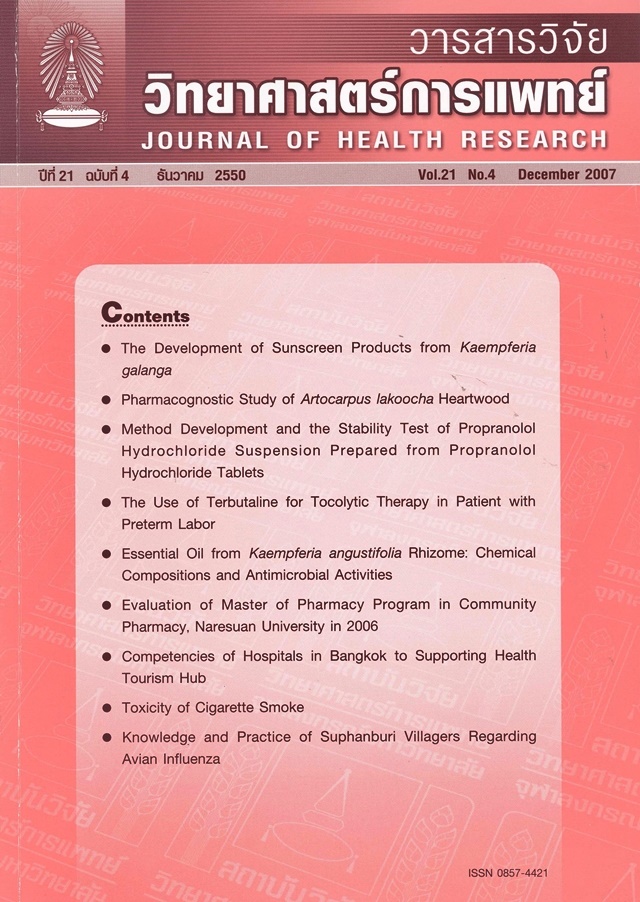The Development of Sunscreen Products from Kaempferia galanga
Keywords:
Kaempferia galanga, sunscreen, SPF, ethyl-p-methoxycinnamateAbstract
The aim of this study is to prepare sunscreen oil-in-water cream incorporated with volatile oil isolated from dry rhizome of Kaempferia galanga Linn. Volatile oil was extracted by hydrodistillation and then analyzed of its main chemicals by means of GC/MS. Sunscreen preparations containing 3, 5 and 7%w/w of volatile oil were prepared and their physical properties (e.g. pH, viscosity) were determined. Further, accelerated stability testing by storing the preparations at 45°C/ 8°C for 6 cycles was carried out. The results showed that the major chemical ingredients in the volatile oil were ethyl-p-methoxycinnamate (43.35%) and ethyl cinnamate (29.56%). The preparations showed good appearance and good physical stability. The sun protection factor (SPF) of the 7% volatile oil containing sunscreen product was 0.67 unit / 1% volatile oil which is comparable to the sunscreening agents used in the marketed sunscreen products.







